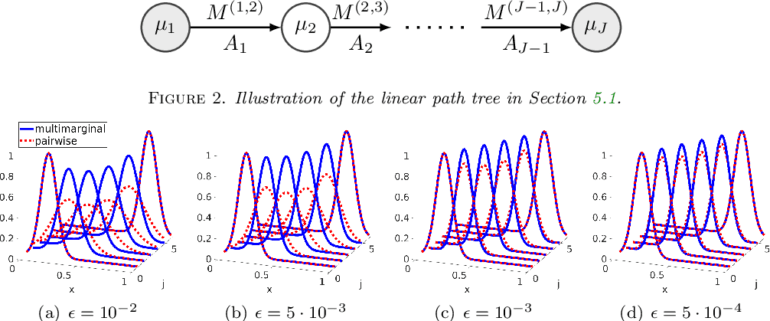TL;DR:
- Researchers propose an efficient approach using multi-marginal optimal transport to enforce distributional constraints in machine learning models.
- The method enables computational efficiency and gradient computation during backpropagation.
- It outperforms existing techniques in terms of accuracy and computational efficiency.
- Multi-marginal optimal transport minimizes the distance between probability distributions, facilitating accurate modeling of complex distributions.
- The proposed method can be seamlessly integrated into existing machine learning pipelines.
Main AI News:
In the ever-evolving realm of machine learning, researchers have unveiled a groundbreaking approach to address the challenge of enforcing distributional constraints. By harnessing the power of multi-marginal optimal transport, this novel method presents an efficient solution that revolutionizes the field.
Distributional constraints play a crucial role in enhancing the accuracy and fidelity of machine learning models. However, existing methods often suffer from computational burdens and integration complexities within the machine learning pipeline. In stark contrast, the newly proposed approach capitalizes on the benefits of multi-marginal optimal transport, ensuring computational efficiency while facilitating the computation of gradients during backpropagation. This seamless integration capability empowers data scientists to effortlessly incorporate the method into their existing pipelines, enabling them to model complex distributions with unrivaled precision.
At the heart of this method lies the utilization of multi-marginal optimal transport, which effectively enforces distributional constraints by minimizing the distance between probability distributions. This elegant approach not only ensures computational efficiency but also enables efficient computation of gradients during backpropagation, making it a perfect fit for a wide array of machine learning models.
To validate the prowess of the proposed method, the researchers meticulously evaluated its performance across several benchmark datasets. The results were nothing short of remarkable, as the method consistently outperformed existing techniques in terms of both accuracy and computational efficiency. These findings underscore the method’s potential to serve as an invaluable asset in elevating the performance of machine learning models across various domains.
Conclusion:
The introduction of the novel approach using multi-marginal optimal transport to enforce distributional constraints in machine learning models holds significant implications for the market. The computational efficiency and improved accuracy offered by this method address the challenges faced by data scientists and machine learning practitioners. By seamlessly integrating into existing pipelines, it enables the development of more sophisticated and accurate models, opening doors to a wide range of applications. This breakthrough has the potential to drive advancements in various industries, empowering businesses to leverage machine learning technology more effectively and gain a competitive edge in the market.

